Still significant to many people, the poppy reminds us of family and friends who served in the military.
Andrena Teed
Kicker
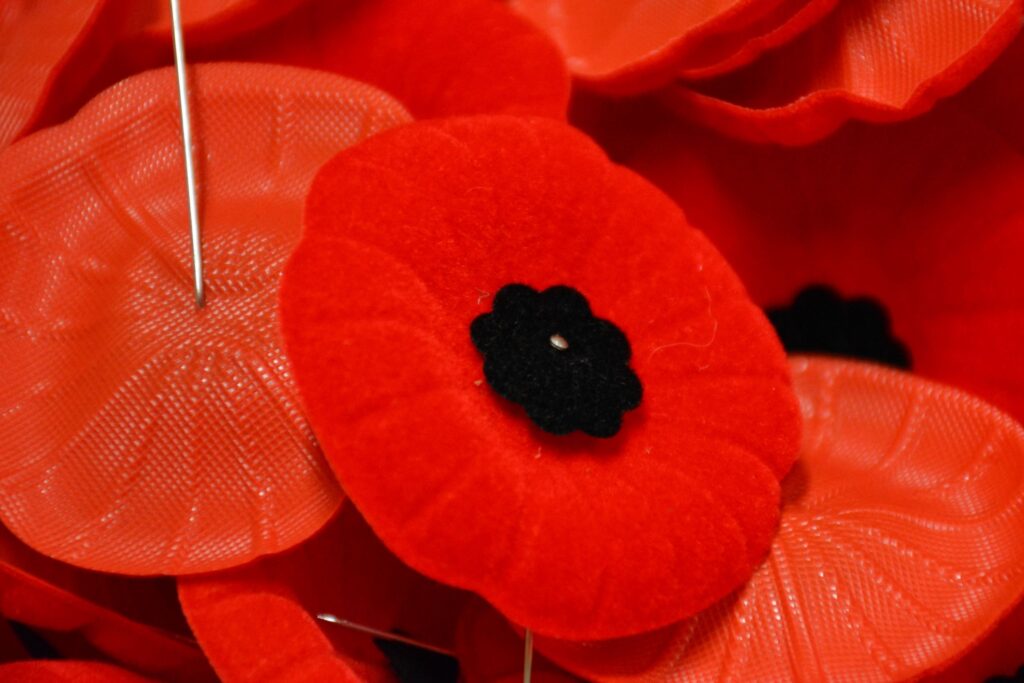
For 100 years, during the week leading up to Remembrance Day, Canadians have been proudly wearing poppies as a symbol of respect and honour.
The poem In Flanders Fields, written by Canadian soldier John McCrae introduced the idea of poppies as a memorial flower for fallen soldiers. Frenchwoman Anna Guérin, inspired by the poem, suggested that the poppy be worn on Remembrance Day in all Allied countries. The funds raised would be used to help soldiers who had returned from war.
That idea appealed to the Great War Veterans Association in Canada. (It later became the Royal Canadian Legion). In 1921, people wore poppies at the Remembrance Day ceremonies. Today, people continue the tradition by wearing poppies from the last Friday in October until Remembrance Day.
Canadians will gather at war memorials for the remembrance service. Almost everyone will be wearing a poppy on their chest. Many will bring a wreath, decorated with poppies, to lay in memory of their ancestors who served in war or peacetime.
“I wear it in remembrance and respect of others.”
Peter Comeau from Weymouth, N.S. on the Bay of Fundy, is the Commander in District D of the Royal Canadian Legion Nova Scotia/Nunavut Command. He and members of his family have served in the Canadian military since the Second World War
“I have a long family history in the military,” Comeau said. ” My grandfather was at Vimy in World War I, but like those old soldiers, he never talked about it. I wear a poppy in remembrance of him. But also for my dad, who was in London during the Blitz. And for my younger brother who served in Cyprus and Afghanistan.”
Comeau served in the Canadian Forces as well. He was posted in the Middle East, Germany and the Balkans. Like his grandfather and father, he said that he only talks about the good times in the military, never about the battlefields.
“I don’t wear the poppy for me. I wear it in remembrance and respect of others.”
“Everyone from so many countries was wearing a poppy”
Johann McBurney from Mavillette, about 43 kilometres north of Yarmouth, N.S., wears a poppy in honour of her husband, who served in Afghanistan.
A few years ago, she toured the First World War battlefields. She wore her Canadian poppy to the Last Post Ceremony at the Ypres Menin Gate Memorial in Ypres, Belgium. Every evening, at 8 p.m., buglers from the local fire brigade sound the Last Post and the Réveille for those who died in this area during the First World War. The names of soldiers who fought at the Ypres Salient and have no known grave are carved on this memorial arch.
“I was proud to be wearing my Remembrance poppy,” said McBurney. “Everyone from so many countries was wearing a poppy. The different countries have slightly different designs, but they mean the same thing – respect and remembrance.”
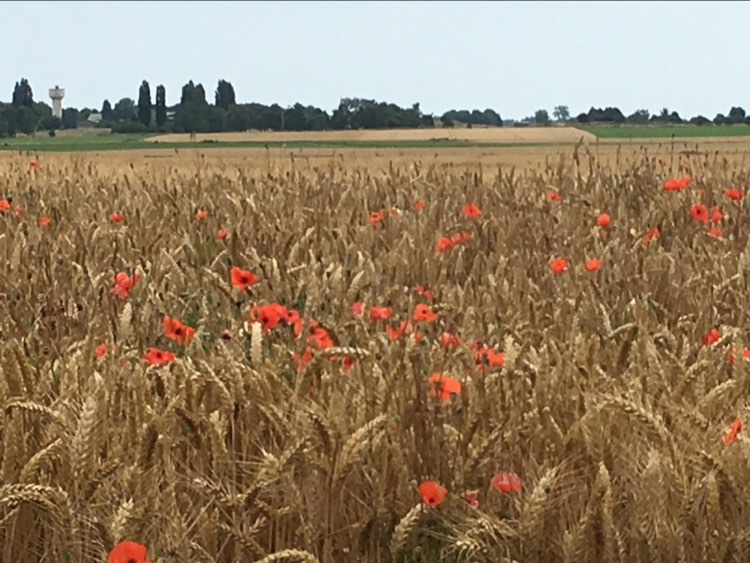
Janece McNutt from Little Brook, a little less than 20 kilometres from Mavilette, on Nova Scotia’s southwest coast, wears a poppy in remembrance of her grandfather and two great-uncles.
“When I wear a poppy, I think about my grandfather and my two great-uncles, always,” said McNutt. “They went to war; only my grandfather came back. A picture of the three of them hung on my grandparents’ dining room wall. It was always special to my mum.”
McNutt went to Europe a few years ago. She visited her great-uncles’ graves in Sancourt and Thelus, near Vimy. Many soldiers died in that iconic Canadian offensive. The bright red poppies growing in the fields near the cemeteries surprised and delighted her.
“It was July, and there were wild poppies all around the cemetery. It was beautiful and very touching to see that. It made the Remembrance Day poppy more real to me, somehow. It was always important, but now it is even more special,” she said, her voice catching slightly.
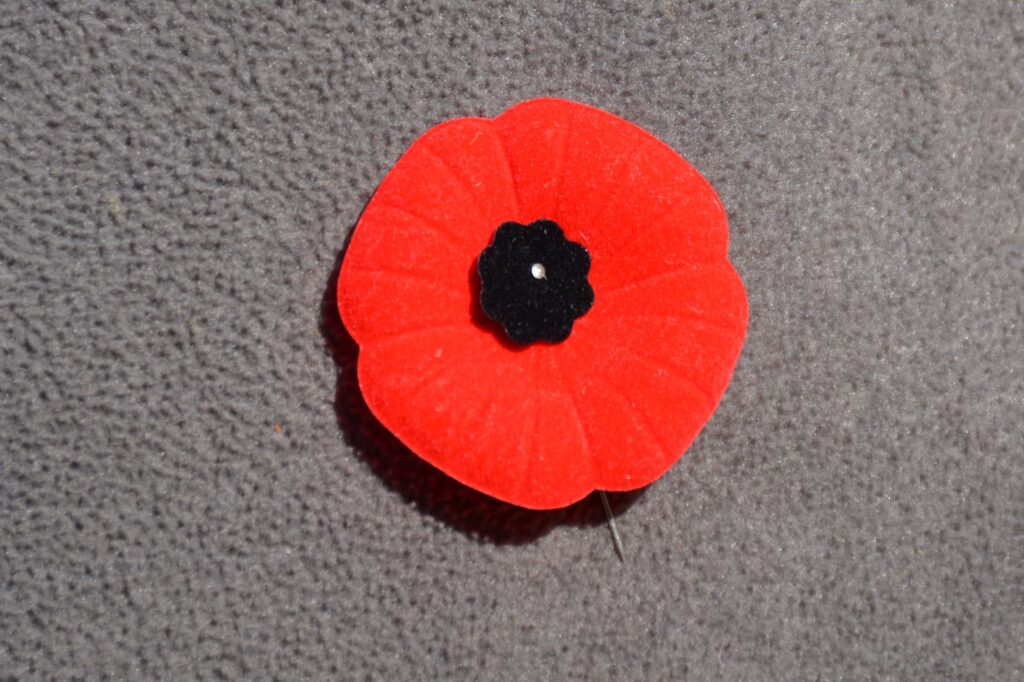
The iconic poppy is a symbol of remembrance and respect. For 100 years, Canadians have worn a poppy to honour our veterans.
The poppy pin is available in many stores and at the local Legions. Find your nearest branch of the Royal Canadian Legion here.
Interested persons can trace the records of ancestors who died in war at The Canadian Virtual War Memorial.

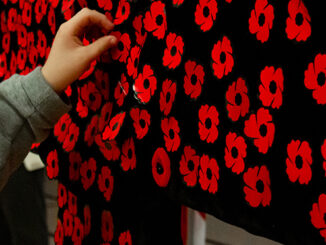

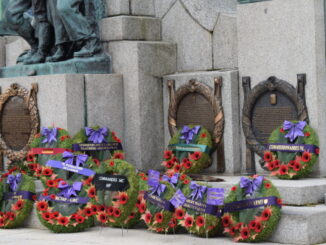
Be the first to comment